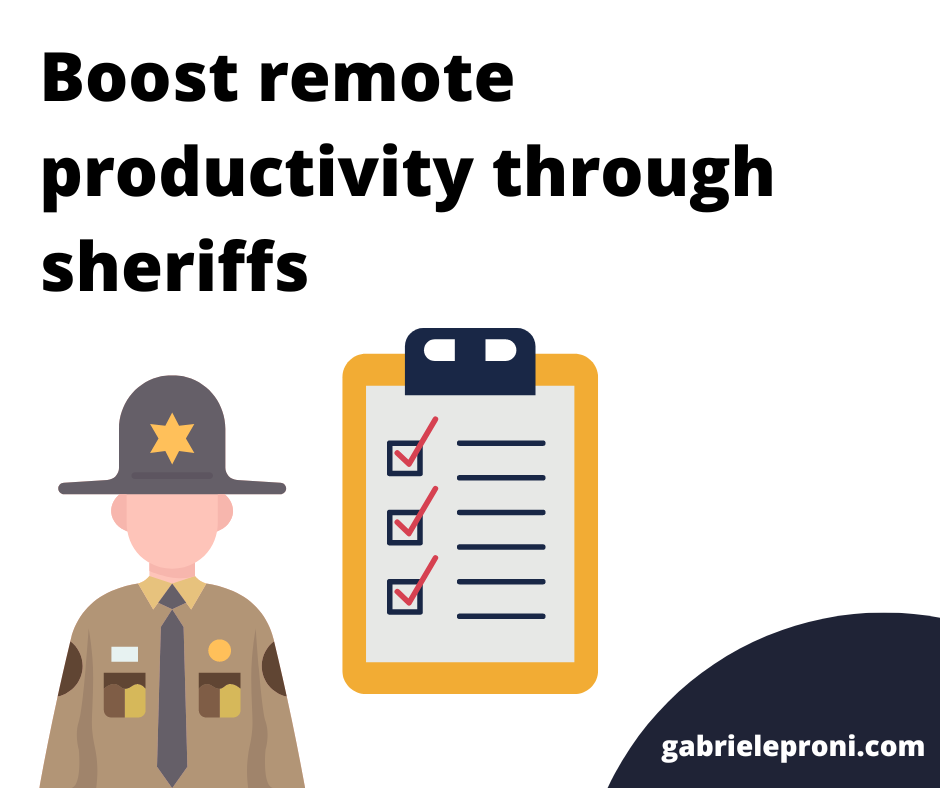When you have a problem and you work remotely, how do you know who is the right guy to speak with?
In today’s issue, I’m going to share how Voxloud solved this problem by introducing the sheriff’s role.
A well-organized Knowledge Base is necessary.
But it’s not a sufficient condition when a teammate needs help.
Let’s make a real example:
John, COO of Acme Inc., is ready to pay to activate his new Voxloud subscription. He decides to use the SEPA Direct Debit as a payment method.
After a couple of days, his bank contacts him.
To approve the recurring payment, They ask for more details about Voxloud.
John asks for help from his Voxloud Sales Specialist.
We can quickly solve the issue:
We should get in touch with Stripe to share the Payment Order PDF (SEPA Direct Debit Mandate) with John and his bank.
It’s essential to give John quick feedback.
We want to close the deal and start the relationship with a positive support experience.
In theory, the flow looks very simple:
- The sales specialist asks the administration team to get the PDF.
- The administration team gets the PDF from Stripe and shares it with the sales specialist.
- The sales specialist shares the PDF with John.
- John shares it with the bank and unlocks the payment.
But behind this simple flow, there are some hidden challenges:
- Who is the right guy in the administration team to operate?
The Sales Specialist shouldn’t be responsible for that. - Who should guarantee that we’ll give John the result in an acceptable time?
The Sales Specialist or the Administration team? - Who should follow up internally in case of delays?
- Sales are all about emotion.
How can you offer the Sales Specialist the right confidence in the process?
That’s the reason why we decided to introduce the Sheriff’s role.

What is a Sheriff
It’s a team member responsible for every ticket about a particular topic during a predefined time window.
To simplify, we can consider a sheriff a “problem manager”.
His role is not to solve all the issues by himself.
He ensures that we will solve all the issues.
Responsibilities of a sheriff
- Validate the new requests.
- Monitor Slack channels to take the necessary actions to reduce incidents’ impact.
- Make an initial investigation. Provide all the information required for its resolution (screenshot, logs)
- Establish a priority and a due date
- Follow up on the problem to guarantee the solution before the due date
How to interact with the Sheriff
We created a Kanban board for every topic.
As of now, we have 2 boards:
- SUPADMIN Board
dedicated to Administration issues (like the example above) - SUPTECH Board
devoted to Technical problems (ex: Bug reporting)
To prevent burnout, the Admin and Tech sheriffs change every two weeks.
They are chosen in round robin amongst development ad administration teammates.
The columns of the Kanban boards are straightforward:
- Todo
For new issues. - Validated
Priority is assigned for cases checked and accepted by the Sheriff. - In progress
Under resolution - Waiting for additional info
When info from the customer or the reporter is missing - Closed:
When the issue is solved.

The benefits of Sheriffs-managed boards
The benefits of this setup are multiple:
- For who raises the issues
- no need to know who to talk with
- confidence about a transparent process to take care of problems
- get notified in case of a new comment or a change of status
- no need to ping colleagues for updates
- For who manages the issues
- no direct messages with unordered requests
- easy to adjust priorities every time a new issue arrives
- brain “empty” from things to remember
- brain “focused” on issue resolution
- when his shift ends, it is simple to hand over the opened issues to the next Sheriff.
- For supervisor and team leader
- Overview always available
- There is always someone responsible for taking care of the process
- Reading related comments and status history is simple to get more info about a single case.
About the Newsletter
1 actionable tip on remote management in your inbox every Saturday morning.
Subscribe